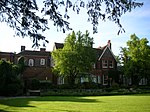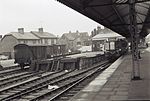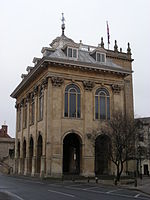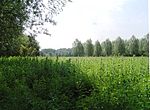Abingdon Abbey
1538 disestablishments in England7th-century church buildings in England7th-century establishments in EnglandAbingdon-on-ThamesAnglo-Saxon monastic houses ... and 8 more
Benedictine monasteries in EnglandChristian monasteries established in the 7th centuryChurches completed in 675Grade I listed buildings in OxfordshireGrade I listed monasteriesMonasteries dissolved under the English ReformationMonasteries in BerkshireMonasteries in Oxfordshire

Abingdon Abbey (formally Abbey of Saint Mary) was a Benedictine monastery in Abingdon-on-Thames in the modern county of Oxfordshire in the United Kingdom. Situated near to the River Thames, it was founded in c.675 AD and was dedicated to Mary, mother of Jesus. It was disestablished in 1538 during the dissolution of the monasteries. A few physical remnants of the Abbey buildings survive within Abingdon-on-Thames.
Excerpt from the Wikipedia article Abingdon Abbey (License: CC BY-SA 3.0, Authors, Images).Abingdon Abbey
Thames View, Vale of White Horse Northcourt
Geographical coordinates (GPS) Address Nearby Places Show on map
Geographical coordinates (GPS)
| Latitude | Longitude |
|---|---|
| N 51.670555555556 ° | E -1.2752777777778 ° |
Address
Abbey Meadows Playground
Thames View
OX14 3ZB Vale of White Horse, Northcourt
England, United Kingdom
Open on Google Maps










